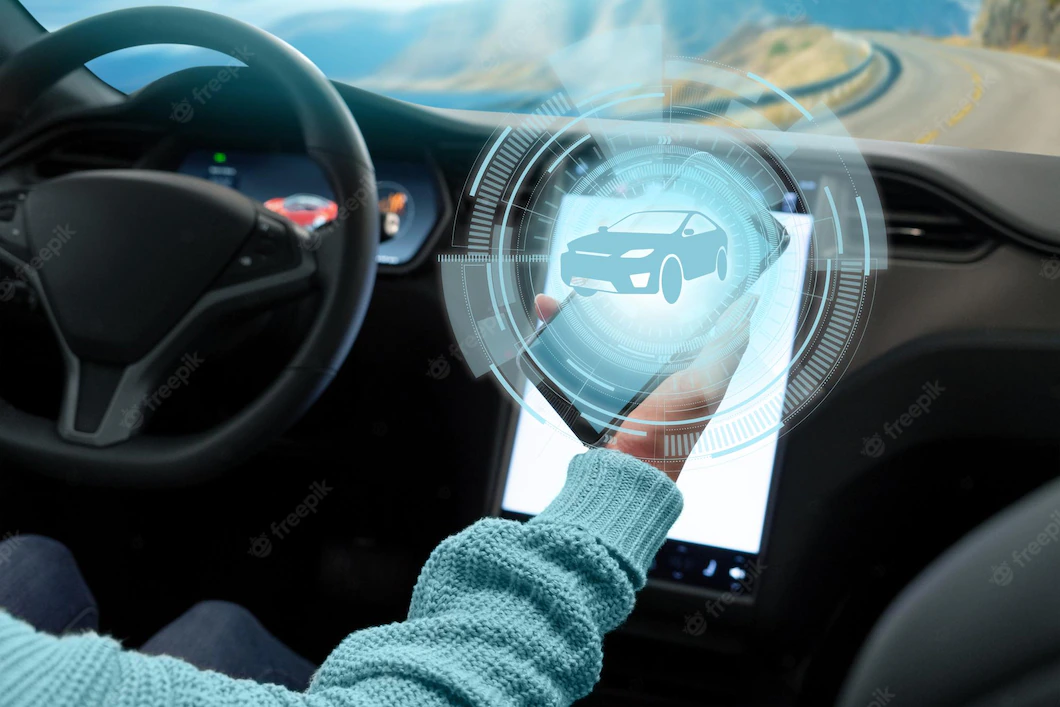Nowadays, besides industries that have been revolutionized by digital transformation such as healthcare, retail, finances, media, or entertainment industry, Automotive industry is also rapidly evolving from technological developments to digital transformation. Today, we will share with you how digital transformation has revolutionized this industry and some trends are currently transforming the automotive industry.
What does a Digital Transformation in Automotive Industry look like?
The automobile industry is moving faster than ever before, thanks to the introduction of new technology within the plant and novel consumer goods being introduced. Automotive manufacturers have been integrating digital technology into all aspects of their operations, from product design through procurement, production, and supply chain management, as well as sales and marketing.
There are many great examples of digital transformation in automobile industry, ranging from product innovation to operational adjustments to customer-facing changes:
- Mercedes-Benz teamed with the start-up Circular to measure emissions of climate-relevant pollutants and the quantity of secondary material used in the supply chain of battery cell manufacturers.
- Cisco and Oxbotica, a worldwide autonomous vehicle software startup, have teamed together to showcase an open roaming platform that allows autonomous fleets to securely share large amounts of data while on the road.
- BMW’s Regensburg facility used an IoT platform to remarkable effect. It enables them to minimize deployment time by 80% and quality control concerns by 5%.
There are many other examples as well. The automotive industry has truly learned quickly to meet consumer demands for a digitally enhanced experience when they are researching, purchasing and operating a car. Here are 3 trends which are currently transforming the automotive industry.
No 1. Autonomous Driving
Self-driving technology, while not as prevalent on the road, is being experimented with all over the world. The possibility of cars driving themselves will become a reality thanks to the collaboration between several advanced technologies. From GPS to sensors to cameras to connectivity and algorithms, Autonomous Vehicle (AV) will ultimately handle all situations and all conditions. The expectation is that AV will decrease automotive accidents and deaths, and give those previously constrained the freedom of travel. Assisted-driving, another facet of autonomous driving, is becoming more mainstream every day as well. It is anticipated that assisted-driving technology will be so effective in reducing accidents and lowering insurance costs that in the next 10 years, it will save consumers upwards of one trillion dollars and, most importantly, more than 900,000 lives.
No 2. Connectivity
Connectivity is the word that suits the present atmosphere perfectly. It is more than a pleasant supplement. This is a consumer-required requirement. Nowadays, many drivers want access to applications, music, and social media accounts. They basically don’t want to be limited. Vehicle manufacturers strive to develop vehicles that allow drivers to run their companies and maintain their social lives while driving to meet their requirements and desires.
Only a couple of years ago, people dreamed of owning cars with Wi-Fi. Nowadays, the need for digital connectivity among younger car buyers makes such vehicles widely available. Manufacturers are soon aware that without such networking features it is now impossible to market or to sell vehicles.
No 3. Digital transformation in the car buying process.
Just a few cars are on display in Audi Virtual Showrooms but use large video screens for purchasing details.
The method to buy a car was frustrating, as the disruptive seller’s stereotype proved valid. Purchasing a new car frequently did not receive information and felt most stressed. Buyers can however check online before visiting a dealer thanks to new digital technology.
No. 4 Predictive Maintenance
Do your tires need air? Does a part need replaced? There’s no more guess work in car maintenance since today’s vehicles let us know when they need maintenance or replacement. Using advanced self-diagnostic systems, drivers are instantly alerted any time there is a problem, allowing us to proactively service our vehicles, drastically reducing mechanical failures and recalls.
No. 5 Data Security and Protection
The car industry is the second most data-driven industry in the world and thus manufacturers collaborate with software development companies.
Modern intelligent cars gather information on traffic patterns, drivers, their regular locations, and more. These data are useful to engage and communicate with drivers. However, to protect driver information, connected systems must be safe. That is why manufacturers are always looking for new defense and safety developments.
These kinds of widespread changes inherently pose challenges to any industry. However, the benefits of technological advancements and the digital revolution of the auto industry far outweigh said challenges.
To sum up, in the automotive industry, digitization is a growing investment. Industry companies realize that, just like every other digital sector, they must be transformed to meet customer demands. Today’s digital trends are very impressive in the automotive industry, which is good in light of the growing appetite for digitally improved customer experience.
Source:
Top 6 Digital Transformation Trends In The Automotive Industry (forbes.com)
Digital transformation in Automotive industry: Things to know (magenest.com)
